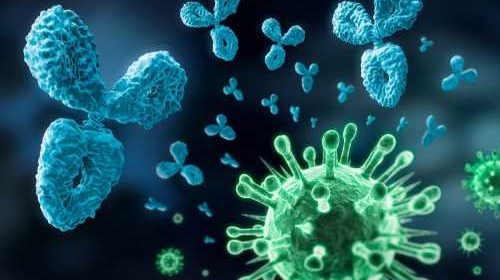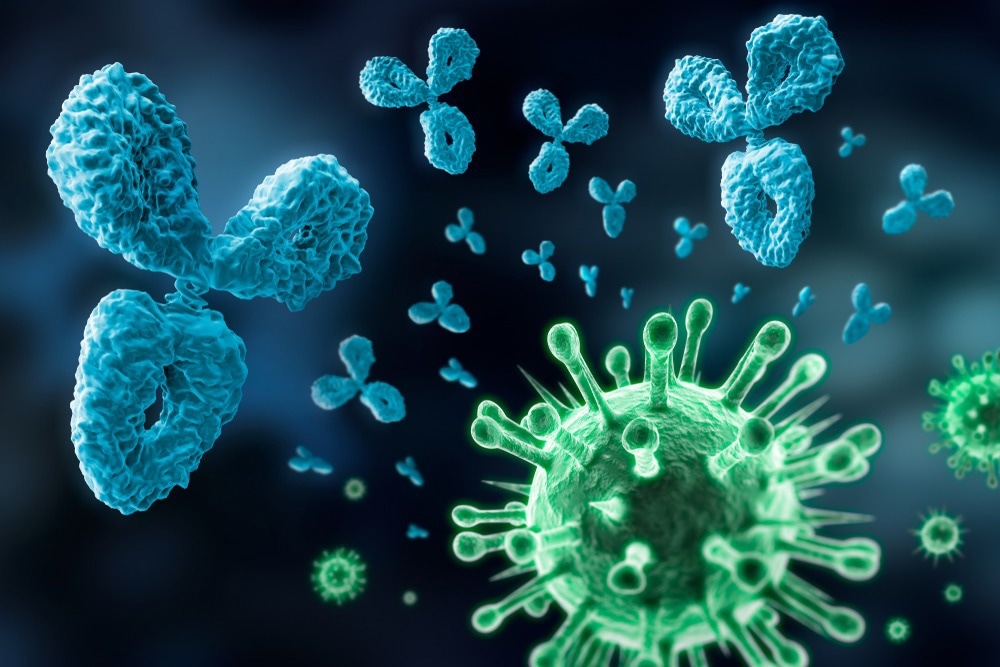Researcher contextualizes a study on IgG4 anti-Spike levels after repeated SARS-CoV-2 mRNA vaccination

In a recent focus piece published in Science Immunology, a researcher emphasized the need to reconsider messenger ribonucleic acid (mRNA) coronavirus disease 2019 (COVID-19) vaccination strategies in the future.

Background
Researchers showed that while repeated mRNA vaccination induced severe acute respiratory syndrome coronavirus 2 (SARS-CoV-2) spike (S)-specific antibodies of the immunoglobulin G4 (IgG4) subtype, an adenoviral vector COVID-19 vaccine did not. Since long evolutionary and functional aspects of IgG4, constituting three to six percent of all human IgG, remained poorly understood. Rob Aalberse et al. uncovered many unknown facts about IgG4 in the past few decades.
For instance, they showed that structural variations in the constant heavy chain 2 (CH2) domain loop of IgG4 impede its binding to complement component 1q (C1q) and to fragment crystallizable (Fc) receptors (FcR). Thus, scientists postulated that IgG4 might be evolving to diminish inflammation.
In addition, these researchers showed that an arginine (R) at 409 amino acid position in the CH3 domain of IgG4 impeded CH3:CH3 pairing, facilitating its dissociation into two half molecules comprising one heavy and an associated light chain. These two half-molecules pair to form bispecific IgG4 antibodies by a process called “Fab arm exchange.” In vivo, this occurs in endosomes during FcRn-mediated recycling.
It is worth noting that IgG4 isotype in complex with IgG1 neutralizes well. However, in a pure form, it is less effective in facilitating opsonization by phagocytes, complement activation, and antibody-dependent cellular cytotoxicity (ADCC), i.e., elimination of pathogen-infected cells by natural killer (NK) cells. It makes the IgG4 isotype unsuitable for therapeutic monoclonal antibodies.
IgG4 and mRNA COVID-19 vaccines
Before discussing IgG4 in the context of mRNA COVID-19 vaccines, it is first necessary to discern the phenomenon termed IgG4 class switching. The humoral arm of the innate immune system switches towards the IgG4 isotype after prolonged exposure to a protein antigen, a phenomenon termed IgG4 class switching. A recent study among beekeepers showed that initial exposure to an antigen in bee venom (called phospholipase A2) elicited precipitating IgG1 antibodies. However, in about six months, these were replaced by IgG4 antibodies that eventually dominated the serological response.
Immunology eBook

Similarly, prolonged activation of recently described CD4+ helper T cells aids the differentiation of the interleukin 10 (IL-10)-expressing extrafollicular helper T cells, which then drives IgG4 class switching. Interestingly, this cell type also collaborated with reactivated B cells that had switched to other IgG subtypes.
Coming to mRNA vaccines, studies have shown that these also facilitate IgG4 switching over time. Though mRNA lacks immunogenic alterations, the lipid nanoparticles in an mRNA vaccine confer an adjuvant effect that facilitates IgG4 switching.
From an evolutionary perspective, likely IgG subtype evolved in humans accidentally. There is no evidence that its functional monovalency or bispecificity is advantageous to the host. Yet, it has some advantageous functions; for instance, IgG4 neutralizes effectively, transfers across the placenta, and contributes to dampening immunity. In addition, it competes with IgE isotype and prevents anaphylaxis. In the anti-muscle specific kinase (MUSK) form of myasthenia gravis, an autoimmune disorder, IgG4 antibodies antagonize the enzyme to disturb neuromuscular synapses.
Conclusions
To conclude, it was not feasible to precisely decipher the negative consequences of increased IgG4 levels, if any, post-repeated vaccination with mRNA COVID-19 vaccines. Yet, in light of these findings, there is an urgent need to reconsider the relevance of COVID-19 vaccination for public health.
The proportion of total anti-SARS-CoV-2 S IgG after vaccination was relatively small initially, though of higher affinity since they surface late. Moreover, they formed immune complexes with IgG1.
Overall, the IgG4 isotype did not compromise immunity in vaccinated COVID-19 patients or SARS-CoV-2 neutralization owing to its functional monovalency.
Nevertheless, based on the evidence presented in this study and theoretical knowledge, future studies should evaluate the effect of spreading out mRNA vaccine boosts over a year.
Alternatively, studies could investigate whether using lesser amounts of mRNA for booster doses and using these vaccines for only priming are feasible options. Most importantly, breakthrough infections post-vaccination also induce anti-SARS-CoV-2 S IgG4. Thus, studies should continuously evaluate ways to tweak mRNA vaccination strategies for the future.
- Is it bad, is it good, or is IgG4 just misunderstood?, Shiv Pillai, Science Immunology 2023, doi: 10.1126/sciimmunol.adg7327
https://www.science.org/doi/10.1126/sciimmunol.adg7327
Posted in: Medical Science News | Medical Research News | Disease/Infection News
Tags: ADCC, AIDS, Amino Acid, Anaphylaxis, Antibodies, Antibody, Antigen, Arginine, Bee, CD4, Cell, Coronavirus, Coronavirus Disease COVID-19, covid-19, Cytotoxicity, Enzyme, FcRn, Immune System, immunity, Immunoglobulin, Immunology, in vivo, Inflammation, Interleukin, Kinase, Muscle, Myasthenia Gravis, Nanoparticles, Opsonization, Pathogen, Phagocytes, Placenta, Protein, Public Health, Respiratory, Ribonucleic Acid, SARS, SARS-CoV-2, Severe Acute Respiratory, Severe Acute Respiratory Syndrome, Syndrome, Vaccine, Venom

Written by
Neha Mathur
Neha is a digital marketing professional based in Gurugram, India. She has a Master’s degree from the University of Rajasthan with a specialization in Biotechnology in 2008. She has experience in pre-clinical research as part of her research project in The Department of Toxicology at the prestigious Central Drug Research Institute (CDRI), Lucknow, India. She also holds a certification in C++ programming.
Source: Read Full Article